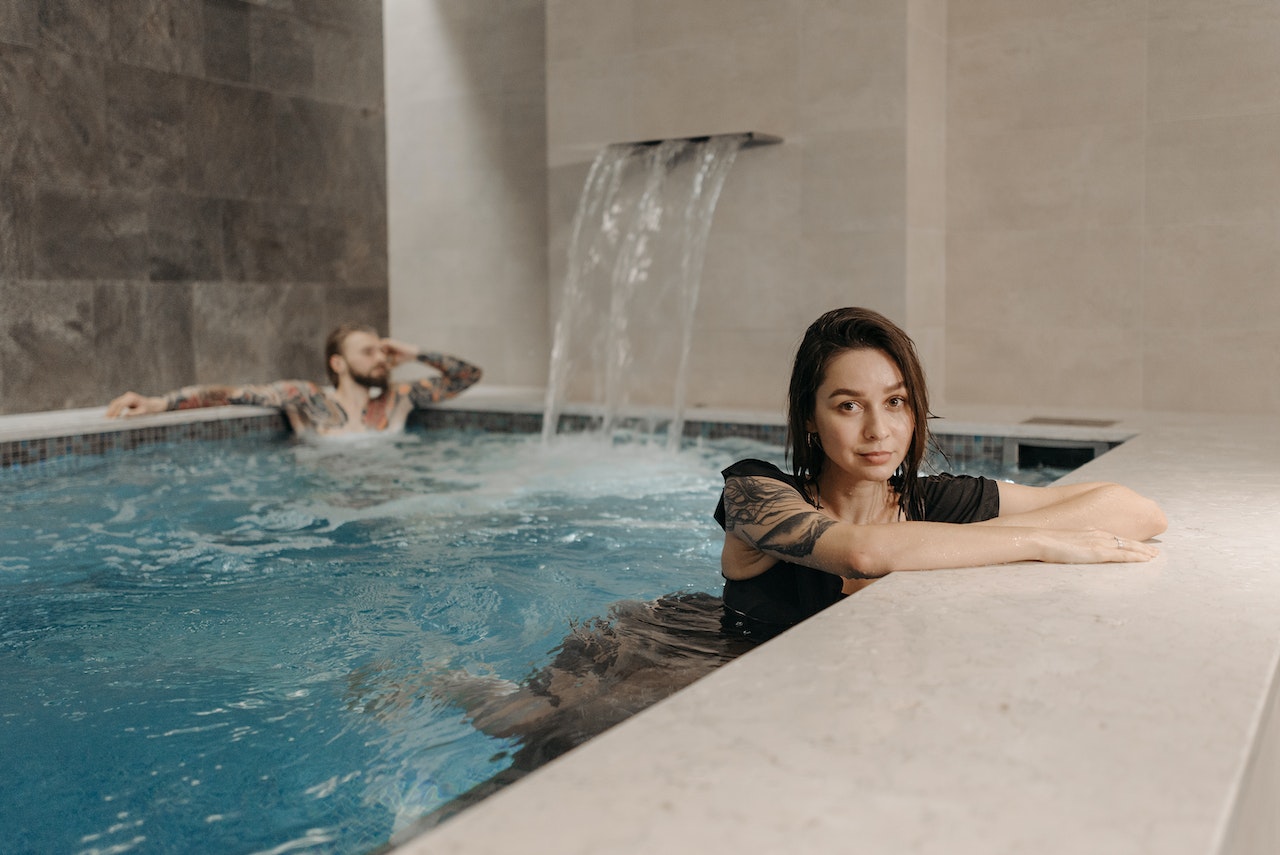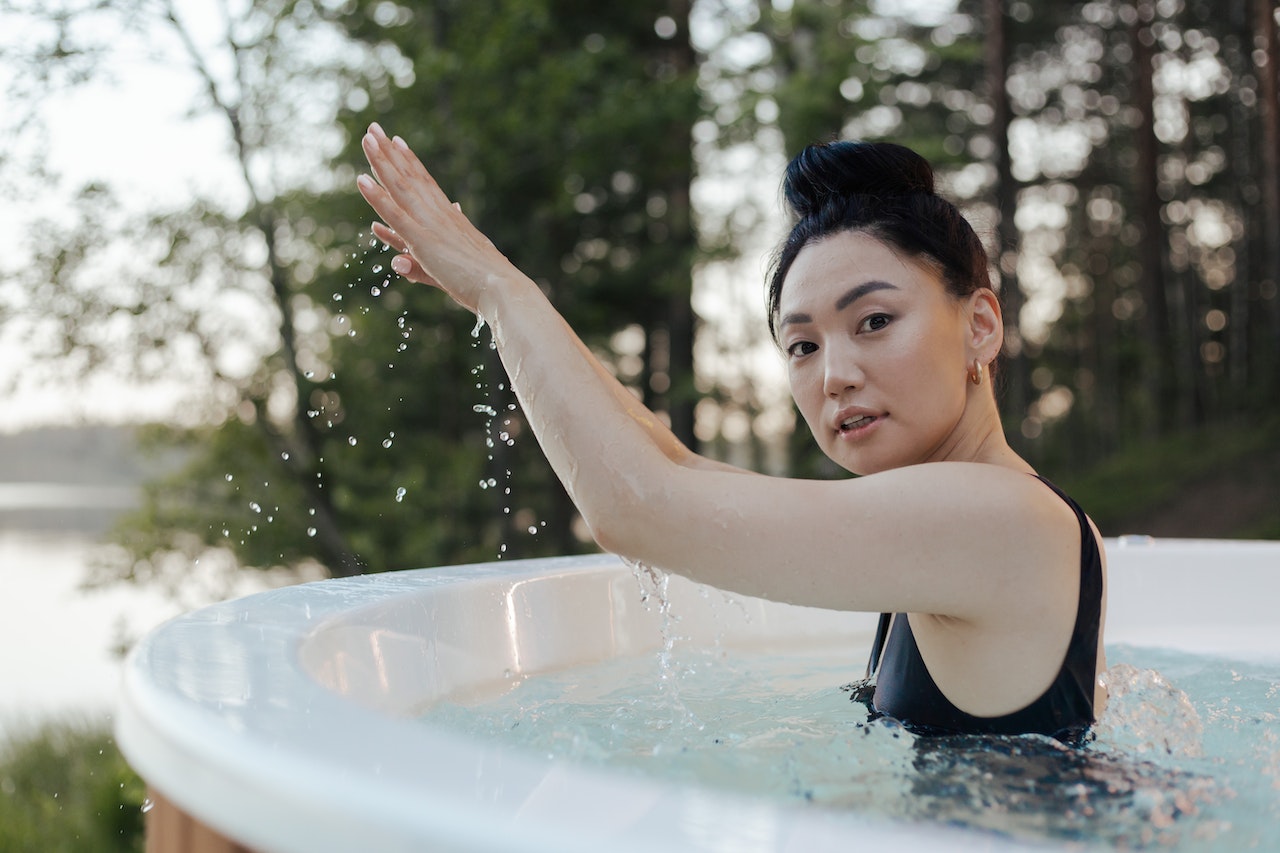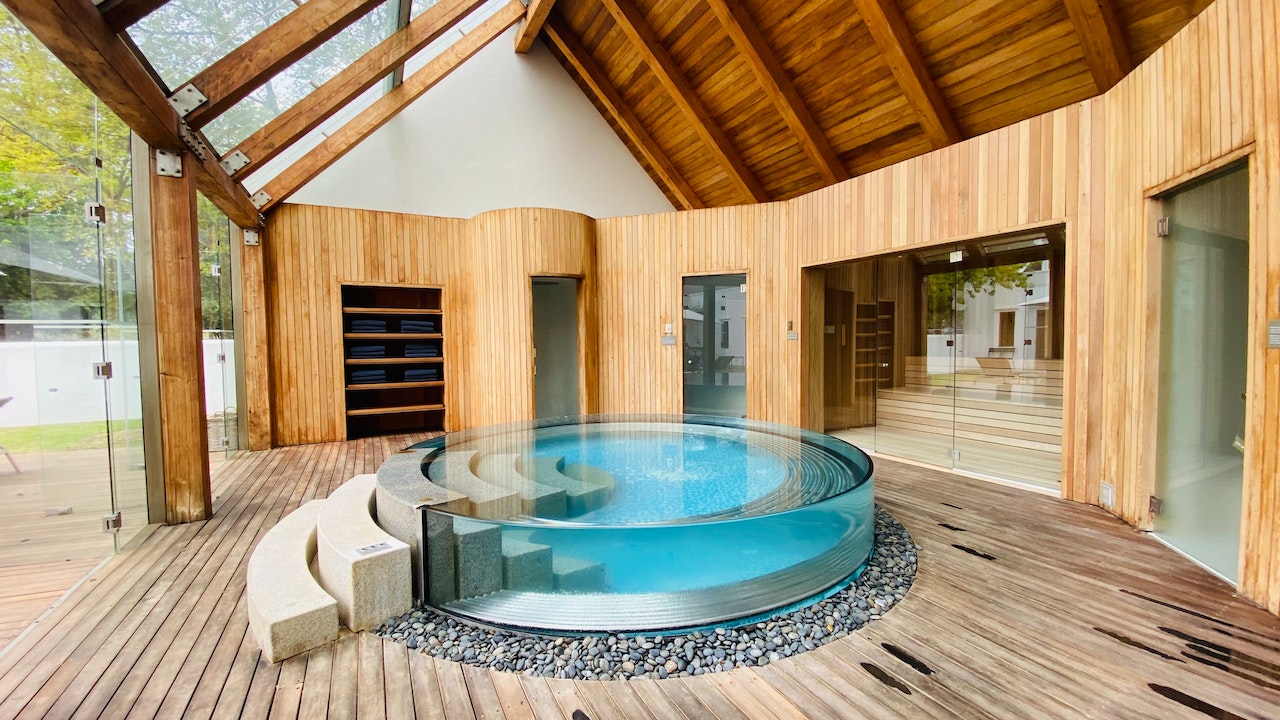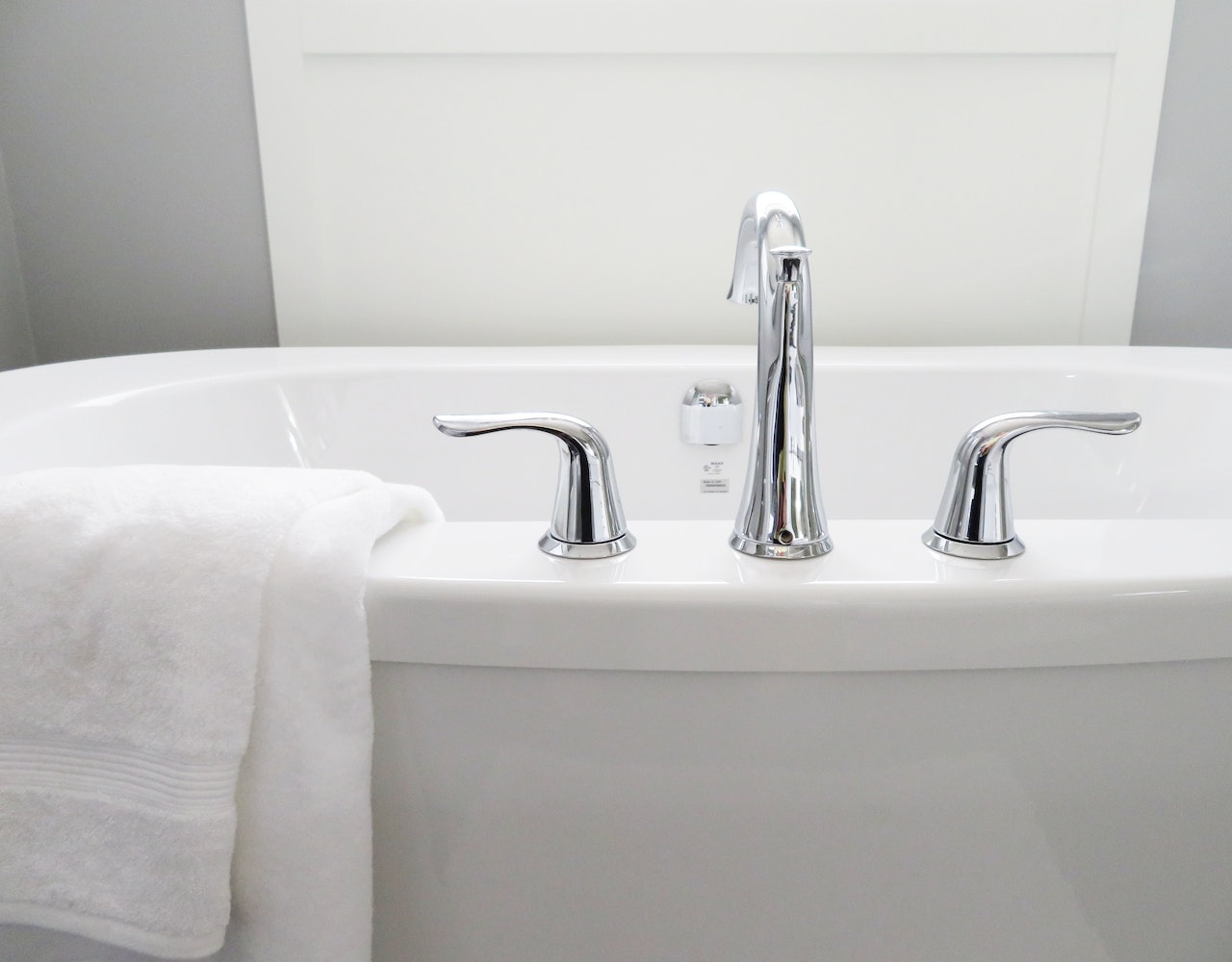Imagine coming home from a long day of sightseeing or hiking, sinking into the warm, bubbling water of a hot tub, and feeling the day’s weariness melt away. The availability of a hot tub can be a powerful attractor for guests seeking relaxation and rejuvenation. While these amenities certainly hold the promise of a memorable vacation experience, they also carry potential safety risks and regulatory compliance issues. Therefore, as vacation rental owners, it becomes essential to establish clear hot tub rules to ensure guest safety and protect rental property interests.
Basic Pool Rules for Vacation Rentals

Firstly, safety should always be paramount when guests use a hot tub. Therefore, clearly defined rules should be communicated to guests in advance to prevent accidents. Here are some fundamental safety guidelines:
Supervision for Children:
Children under the age of 12 should never be allowed in a hot tub without adult supervision. The combination of high water temperatures and deep water can pose significant risks.
Time Limit:
Prolonged exposure to hot water can cause dizziness or heat stroke. Guests should limit their soaking time to 15-20 minutes and take a break before re-entering the spa.
Temperature Control:
The hot tub temperature should never exceed 104 degrees Fahrenheit, as recommended by the U.S. Consumer Product Safety Commission.
No Glassware:
To avoid potential injury, glass containers should never be allowed near or in the hot tub. Plastic or shatterproof containers should be used instead.
Cleanliness:
Guests should always shower before using the hot tub to remove any lotions, oils, or other substances that could affect water quality.
No Diving or Jumping:
Due to the relatively shallow depth of a hot tub, diving or jumping in could lead to serious injury. Make it clear to guests that they should enter and exit the hot bath tub carefully and calmly.
Limit on Occupancy:
Every hot tub has a maximum safe occupancy number based on its size. Guests should be informed of this limit to avoid overloading the hot tub, which can compromise its structure and filtration system, and also increase the risk of accidents.
No Electrical Appliances:
Any electrical devices, including phones, speakers, or laptops, should be kept at a safe distance from the pool or hot tub to avoid the risk of electric shock.
Pregnant Women Caution:
It is widely recommended that pregnant women consult with a healthcare professional before using a hot tub, as elevated body temperatures can pose risks during pregnancy.
Hydration:
Encourage guests to drink water before and after hot tub use to avoid dehydration, which can be heightened by the heat of the hot tub.
Proper Attire:
Guests should be advised to wear suitable swimwear that doesn’t compromise the water quality. Regular clothing or underwear can introduce detergents or contaminants to the water.
No Pets:
Pets should not be allowed to sit in the hot tub for their safety and to maintain water cleanliness.
Cover After Use:
Guests should be instructed to cover the hot tub after each use. This helps maintain water temperature, prevent debris and food from entering the tub, and acts as a safety measure to prevent unsupervised use.
Noise Control:
To respect the tranquility of the surrounding area or neighboring properties, a rule about maintaining a low noise level, especially during late hours, would be considerate.
Maintaining Regulatory Compliance

Compliance with health and safety regulations is just as vital as observing the basic safety rules. Rental owners should understand local laws and regulations related to hot tubs. This includes ensuring proper installation, routine maintenance, water quality checks, and safety features such as railings and hot tub covers throughout.
To maintain a compliant and safe hot tub environment:
Regular Maintenance:
The hot tub should be inspected and serviced regularly to ensure its heating and filtration systems are working correctly. A record of maintenance checks should be maintained and made available to guests upon request.
Water Quality:
The water should be checked and treated regularly with the appropriate chemicals to maintain safe levels of pH, alkalinity, and disinfectant. Improperly balanced water can lead to skin, eye, and respiratory problems.
Safety Features:
Install safety features such as slip-resistant surfaces, securely fastened covers, and safety railings. Ensure that guests are informed about their use and importance.
Communicating Hot Tub Rules to Guests
Effective communication is key in enforcing these rules. Make these guidelines easily accessible to guests by:
Including them in the Rental Agreement: Hot tub rules should be an integral part of the rental agreement. This will not only ensure that guests are aware of them, but it also protects the property owner from liability in case of accidents.
Posting Safety Signs: Placing safety signs around the hot tub area serves as a constant visual reminder of the rules.
Providing a User Manual: A detailed user manual with instructions on using the hot tub controls, safety features, and emergency contacts can prove extremely useful.
Mitigating Risks with Insurance
In addition to rules and regulations, it is also crucial to have the renters insurance coverage. Check out if the vacation rental property insurance covers the hot tub and any related incidents. If not, consider updating the policy or adding a rider to ensure full coverage.
Guest Education: A Proactive Approach
While clearly stated rules are essential, proactive guest education can make a significant difference. Provide guests with information about the risks and benefits of hot tub use. Information about the effects of alcohol, smoking, dehydration, and certain medical conditions on hot tub use can be particularly useful.
Choosing the Best Hot Tub for Your Rental Property
Investing in a hot tub for your rental property is more than just picking the first one you see. To match the luxury and safety that guests expect, consider these short bullet-point guidelines for choosing the best hot tub:
Size and Capacity:
Select a hot tub that fits the typical guest occupancy for your property. Avoid too large or too small tubs, as this can impact both user experience and energy efficiency.
Energy Efficiency:
Look for models with energy-saving features. An energy-efficient hot tub not only reduces operating costs but is also an attractive feature for environmentally-conscious guests.
Ease of Maintenance:
Opt for a hot tub with user-friendly controls and easy-to-maintain parts. This will ensure that you can adhere to the required regular maintenance schedule and guests can easily operate the hot tub.
Warranty and Support:
Check for a robust warranty and responsive customer support from the manufacturer. This is crucial for addressing any unforeseen issues and ensures long-term reliability.
Compliance with Standards:
Ensure the hot tub model complies with local safety and health regulations. This might include features like slip-resistant surfaces, secure covers, and safety railings.
Design and Aesthetics:
Consider the overall appearance and comfort of the hot tub. It should blend seamlessly with your property’s style and provide a luxurious soaking experience.
Guest Feedback:
If possible, review feedback from other property owners or guests who have experienced the model. This first-hand insight can guide you to a choice that’s proven to satisfy guests.
Budget Consideration:
While it’s tempting to opt for the most luxurious model, align your choice with your budget and the expectations of your typical guests. Striking the balance between quality and cost will contribute to a wise investment.
By carefully evaluating these aspects, rental property owners can find a hot tub that complements the safety, enjoyment, and elegance offered by their property. This thoughtful selection will not only enhance the guest experience but also align with the essential safety and compliance guidelines previously outlined.
Jacuzzi Rules for Vacation Rentals
Jacuzzis, like hot tubs, offer a soothing experience but come with their own specific set of rules to ensure guests’ safety and enjoyment. These rules may include guidelines similar to those of a hot tub, such as temperature control, cleanliness, and occupancy limits, but also special attention to the jet features, ensuring they are properly used and maintained. Clear instructions regarding the jacuzzi’s jet system and any unique features should be communicated to guests to maximize their relaxation experience while minimizing risks.

Providing a manual or placard with these instructions near the jacuzzi can be a practical way to ensure guests have immediate access to the information they need for a safe and enjoyable soak.
Hot tubs: Balancing Enjoyment and Safety
A hot tub can transform a vacation rental into a coveted destination. Yet, this luxury comes with a cost and responsibilities. With the implementation of comprehensive safety rules, regulatory compliance, clear communication, and adequate insurance coverage, vacation rental owners can create a relaxing and safe environment. By doing so, guests can unwind without worry, and owners can provide a superior experience while protecting their investment.
In conclusion, establishing hot tub rules for vacation rentals requires a strategic balance between promoting guest enjoyment and ensuring safety. By focusing on these key areas, vacation rental owners can ensure a safe, compliant, and enjoyable hot tub experience for their guests, reinforcing their property’s reputation as a premier destination.





